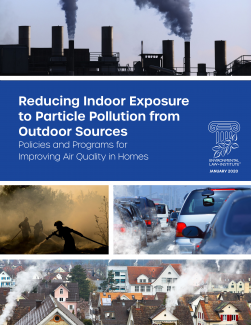Reducing Indoor Exposure to Particle Pollution from Outdoor Sources: Policies and Programs for Improving Air Quality in Homes

Particulate matter is one of the most significant air pollutants in terms of public health impacts. Exposure to particle pollution is associated with a range of respiratory and cardiovascular symptoms and diseases, as well as premature death. While the U.S. has achieved notable progress in reducing ambient air pollution over the past several decades, communities throughout the country still experience levels of particle pollution that put people at risk.
Most of our exposure to particulate matter occurs inside buildings. Particles in outdoor air enter buildings through cracks and gaps in the building envelope and through natural or mechanical ventilation. Fortunately, building science provides solutions that can help reduce indoor exposure to outdoor pollutants through high-efficiency filtration and other strategies. States, tribes, and local governments have an important role to play in strengthening residential building design, construction, operation, and maintenance practices to reduce indoor exposures, especially for people who are most vulnerable to the health effects. This report supports such efforts by describing policy and program opportunities for reducing exposure to particle pollution from outdoor sources, in both new and existing homes. Future ELI reports will examine strategies for addressing exposure to particulate matter from indoor activities, such as cooking and wood-burning.